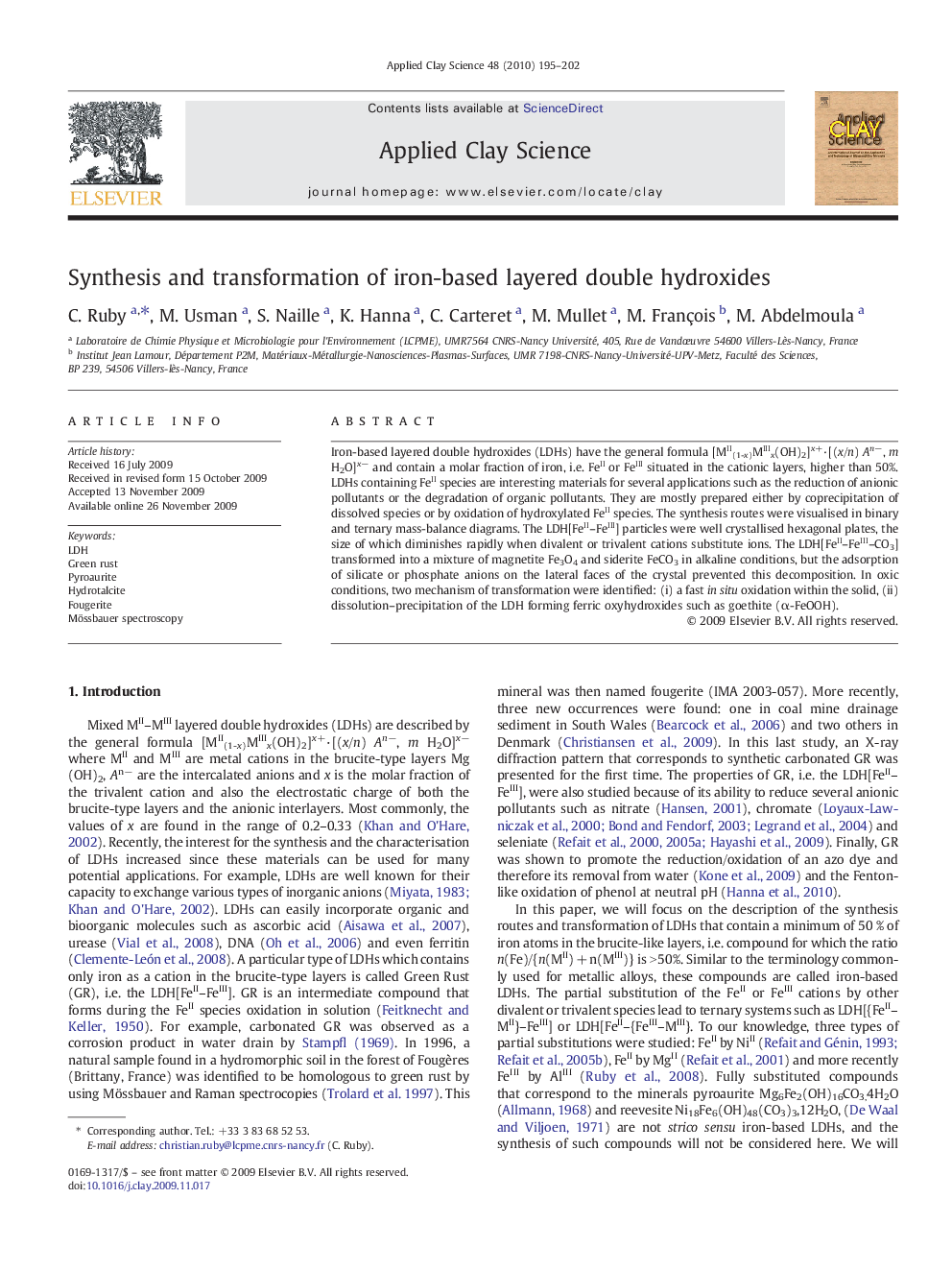| Article ID | Journal | Published Year | Pages | File Type |
|---|---|---|---|---|
| 1696062 | Applied Clay Science | 2010 | 8 Pages |
Iron-based layered double hydroxides (LDHs) have the general formula [MII(1-x)MIIIx(OH)2]x+·[(x/n) An−, m H2O]x− and contain a molar fraction of iron, i.e. FeII or FeIII situated in the cationic layers, higher than 50%. LDHs containing FeII species are interesting materials for several applications such as the reduction of anionic pollutants or the degradation of organic pollutants. They are mostly prepared either by coprecipitation of dissolved species or by oxidation of hydroxylated FeII species. The synthesis routes were visualised in binary and ternary mass-balance diagrams. The LDH[FeII–FeIII] particles were well crystallised hexagonal plates, the size of which diminishes rapidly when divalent or trivalent cations substitute ions. The LDH[FeII–FeIII–CO3] transformed into a mixture of magnetite Fe3O4 and siderite FeCO3 in alkaline conditions, but the adsorption of silicate or phosphate anions on the lateral faces of the crystal prevented this decomposition. In oxic conditions, two mechanism of transformation were identified: (i) a fast in situ oxidation within the solid, (ii) dissolution–precipitation of the LDH forming ferric oxyhydroxides such as goethite (α-FeOOH).
